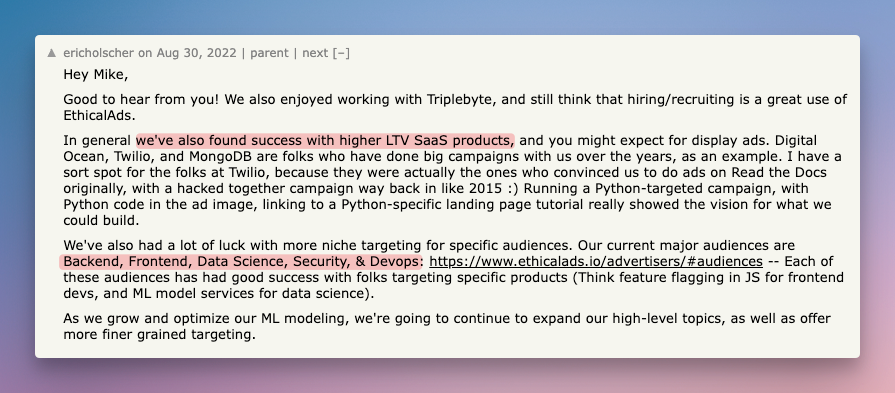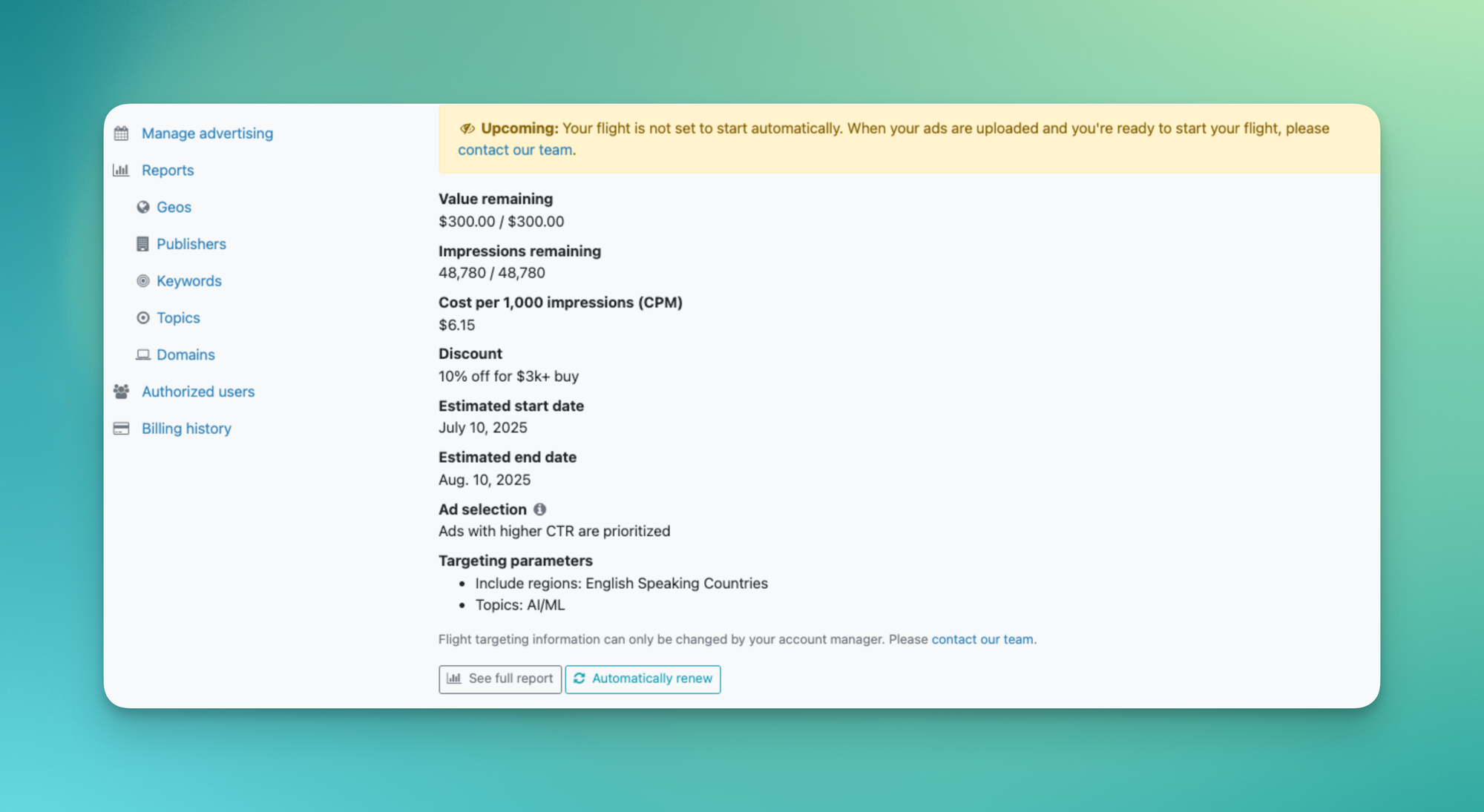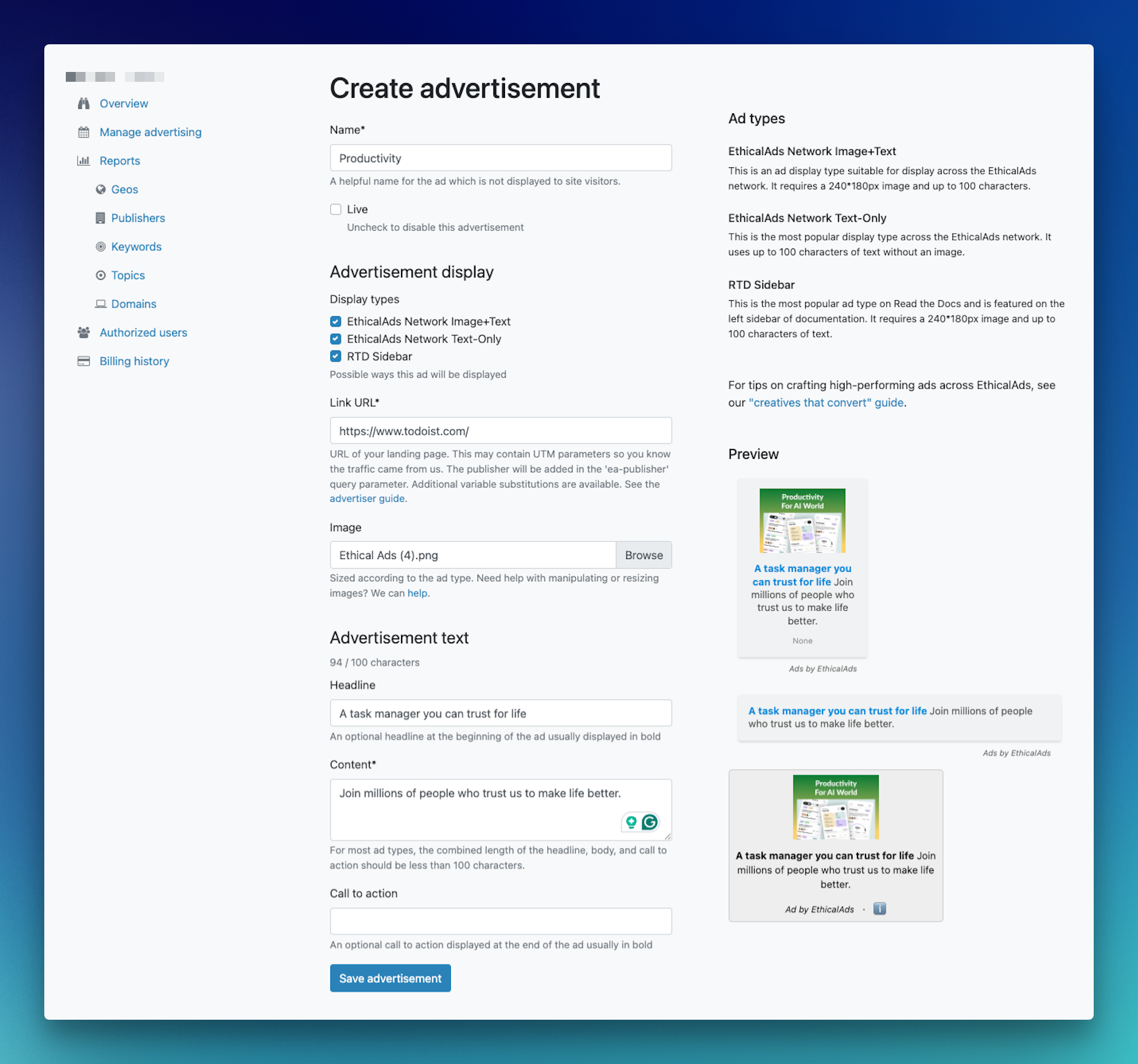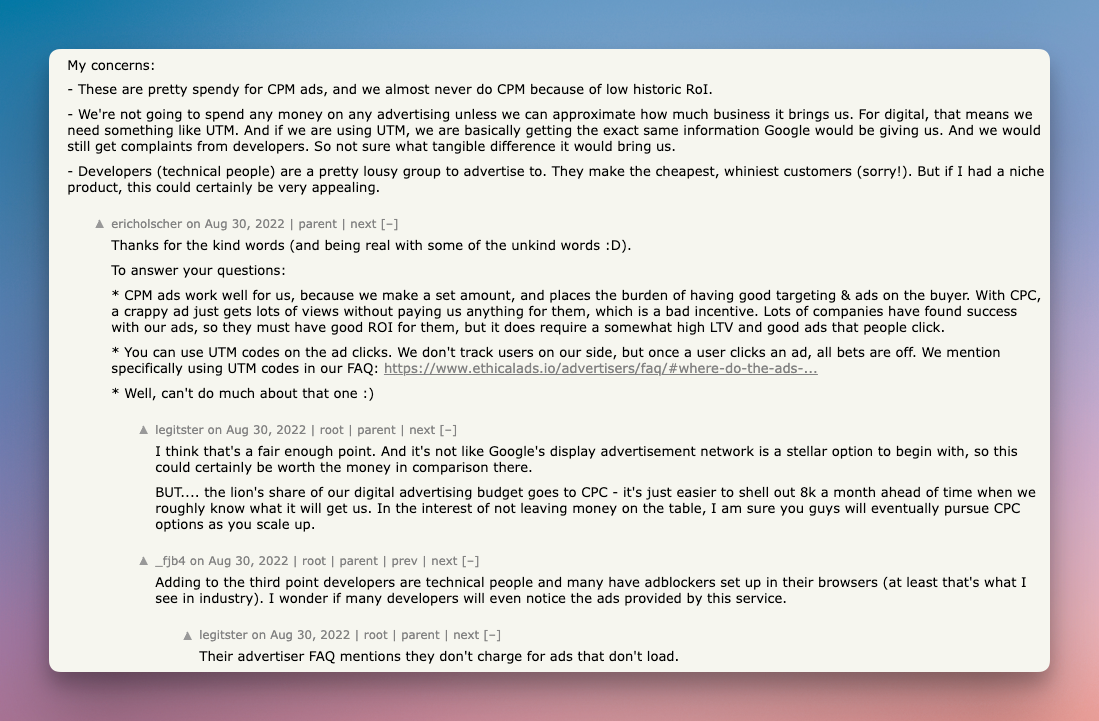Getting started with EthicalAds: a developer-focused ad network for developer-focused products.
EthicalAds is an ad network that exclusively targets developers, ensuring ads are relevant and shown only on curated, developer-focused websites.
I work for a product-based company that primarily targets developers, who are our ideal customer profile (ICP). As an experiment, we tried various paid channels like Google AdWords, Reddit, and LinkedIn, but none of them worked well for us. Obviously, because we focus on developers, and developer marketing requires a completely different approach or framework.
Then there's the issue of ad placement. When using traditional or large ad networks, your ads might appear in underwhelming or irrelevant spots. These are the problems we aimed to solve.
This search led us to EthicalAds, a platform that lets us run experiments and advertise specifically to developers.

EthicalAds distinguishes itself from typical networks like Reddit, LinkedIn, or Google AdWords by exclusively serving ads to a 100% developer audience and promoting only developer-related products. This results in highly relevant ads—you won’t see ads for unrelated items like books or medicines here. All ads appear only on developer-focused websites curated by experts, creating a win-win for relevance and engagement.
Unlike general ad networks, EthicalAds guarantees your ads are shown only on carefully selected, developer-centric publishers. It’s part of the Acceptable Ads initiative, meaning your ads are less likely to be blocked by popular browsers, increasing the chances they’ll reach your target audience.

You can target not just geography but also specific developer interests, such as backend or frontend development, AI/ML, and more. The network includes over 170 vetted publishers dedicated to the developer niche.
Transparency is core at EthicalAds—you can log into your dashboard anytime and see real-time reports broken down by performance, location, publisher, and more, so you always know where your ads are running and maintain full control over relevance. Overall, EthicalAds is a specialized, transparent, and effective platform for anyone aiming to reach developers.

Getting started is different from platforms like Google Ads. Instead of signing up, creating campaigns, setting budgets, and launching immediately, EthicalAds involves more manual steps.
Here’s an overview:
1. Fill out a contact form on their website with your details, company info, domain, targeted geography, developer niche, and intended monthly spend.
2. Submit your request. EthicalAds will email you a link to your personal ad portal.
3. In this portal, campaigns are called “flights.” A flight is a campaign with set start and end dates, budget, targeting, and ads.
4. You can’t create flights yourself; you need to ask the EthicalAds team to set one up. Once created, you can add or edit ads within it.
5. For changes to campaign settings like targeting or budgets, you need to email the team, who typically makes updates within a day.
6. After reviewing campaign details and ads, you can request an invoice. Once paid, they can schedule your ads to run on a specific date.
Unlike large ad networks, EthicalAds’ curated approach means less inventory and sometimes a wait of up to 20 days before your campaign goes live.
Keep these points in mind when planning your EthicalAds campaigns. If you have questions or want to start, reach out directly to their team for support and next steps.
👇👇 AI/ML Advertising: Key Targeting Topics 👇 👇
- data-science
- datascience
- ml
- training-data
- model-training
- machine-learning
- machinelearning
- sentiment-analysis
- ai
- artificial-intelligence
- neural-net
- neural-nets
- data-analytics
- visualization
- data-visualization
- nlp
- object-detection
- computer-vision
- jupyter
- matplotlib
- deep-learning
- pandas
- numpy
- tensor
- tensorflow
- pytorch
- spacy
- textacy
- pytorch3d
- metabase
- tableau
- snowflake
- pydata
- opencv-python-library
- facedetection
- neuralnet
- objectdetection
- classifier
- monte-carlo
- montecarlo
- naivebayes
- naive-bayes
- vision-api
- openai
- deeplearning
- k-means-clustering
- clustering
- reinforcement-learning
- deep-reinforcement
- deepreinforcement
- scipy
- matlab
- face-detection
- d3js
- datamesh
- data-mesh
- datalake
- dalle
- chatgpt
- midjourney
- jupyterhub
- jupyterlab
- chatgpt3
- sklearn
- overfitting
- regression
- regression-model
- regressionmodel
- scikit-learn
- tensorflowjs
- bayes
- bayesian
- llm
- llms
- scikitlearn
- cuda
- gpt
- chatbots
- chatbot
- transformers
- datascientist
- data-scientist
- dataanalytics
- neuralnetworks
- neural-networks


In a HackerNews thread, there is an interesting conversation about why EthicalAds chose the CPM (cost per 1000 impressions) instead of CPC (cost per click). The reasons are:
- Predictable Revenue for the Publisher:
- With CPM, EthicalAds earns a set amount for every 1,000 impressions, regardless of whether users click the ad. This places the burden of creating effective ads and targeting on the advertiser.
- In contrast, with CPC, EthicalAds only earns money when users click the ad. Poorly performing ads (low click-through rates) generate views but no revenue, which the publisher sees as a bad incentive.
- Advertiser Responsibility:
- The EthicalAds argues that CPM works well because advertisers must ensure their ads are high-quality and well-targeted to achieve a good return on investment (ROI). This aligns incentives, as advertisers with high Lifetime Value (LTV) products can justify the cost.
- Proven Success:
- The EthicalAds mentions that many companies have found success with their CPM ads, implying that the model can deliver good ROI for advertisers who understand their audience and create compelling ads.

